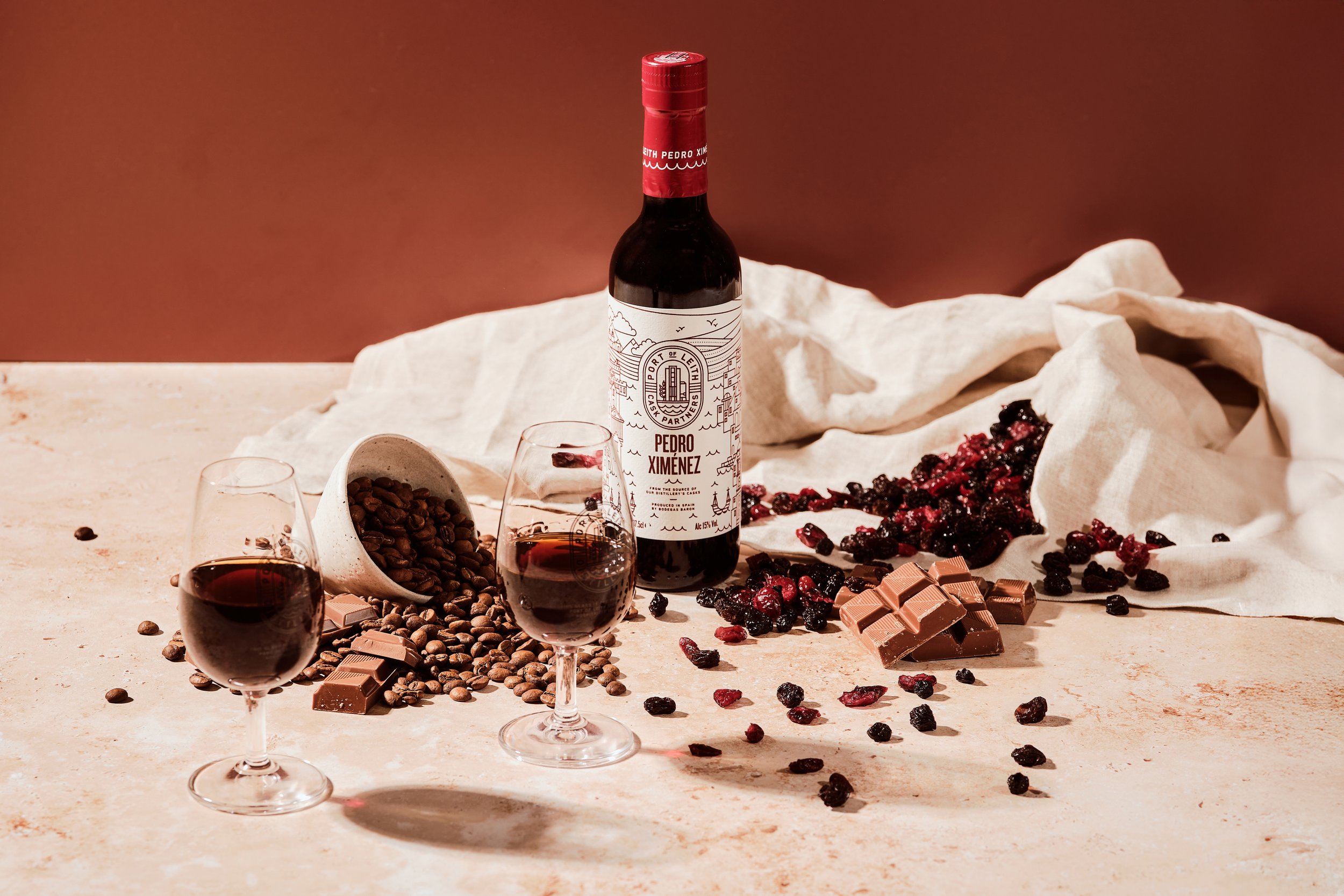
Our Sherry
The Producer
Finding the right sherry producer was essential to us. The quality of their wine and casks will have a very significant impact upon our Single Malt Whisky, and we wanted to build a lasting relationship with like-minded people.
Bodegas Baron is a family owned bodega in Sanlúcar de Barrameda. Founded in 1631, they have a thoroughly modern approach in what is a very traditional region, a value shared with the Port of Leith Distillery.
However, it was after tasting our way through their treasure trove warehouse, tucked away in the centre of the town, that we knew we had found a life-long partner for our whisky.
The Sherry
-

The Manzanilla
Manzanilla is made from Palomino grapes, fermented and fortified in the coastal town of Sanlucar de Barrameda, in Spain's sherry triangle. It’s made in the same style as Fino Sherry, with its location and unique climate making it bone dry. There are notes of fresh citrus, nuttiness and doughy flavours that linger on your palate.
-

The Oloroso
Oloroso is fortified to a strength of 17% to stop the development of flor and expose the wine to air. This produces a heavier, more structured and complex wine that’s bursting with dried fruits, complex oak and a balanced sweetness with hints of spice.
-

The Pedro Ximénenz
The name Pedro Ximénez (or PX) is derived from the white grapes from which this wine is made. The grapes go through a process of concentrating the sugars inside before going through maturation in a solera. It has incredibly rich flavours of raisins, figs and prunes, with deep aromas of coffee and chocolate.
The History
-
Edinburgh’s Port of Leith was once the epicentre of Scotland’s whisky trade.
Casks of sherry arriving into the harbour would be decanted into locally manufactured bottles. Whisky merchants then bought up the empty casks to store their spirit in the dozens of bonded warehouses that once lined the shore. They soon discovered that it transformed their spirit and a major innovation in whisky production was born on our doorstep.
-

The palomino grapes for sherry are grown in vineyards in Jerez in the South of Spain. They are fermented like any other wine.
-

The wines are then fortified with grape spirit and matured in 'Solera' warehouses in the towns of Jerez and Sanlúcar de Barrameda.
-

Historically, full casks of sherry were shipped to Leith and then decanted into locally-made bottles. Whisky merchants then used the empty casks to mature their spirit.
-

They realised customers came back for the sherry cask-matured whisky. A new tradition in Scotch production was born, and it began in Leith.
Our Port
The Producer
The Port industry, like the whisky industry, is steeped in history and tradition and dominated by a small number of major companies. We wanted to look beyond these, and try to find someone of a similar scale and outlook as our own company, with very special wines.
When we first tasted the samples from Martha’s Family Wines, we couldn’t quite believe our taste buds. Their wines had such vibrancy and quality, it was hard to believe that they couldn’t be better known.
This Portuguese family has incredibly long ties to the Douro Valley. The oldest vineyard in their estate has belonged to the family since 1727, but for most of their history the wines were sold on to larger producers to be sold under different brands, with only a tiny percentage bottled for the family’s private use. Throughout that time, the focus has been on the production of Tawny Ports. Their vineyards are based in the Baixo Corgo region of the Douro Valley, which is the part of the valley closest to the historic trading port of Porto.
The Port
-

The Reserve Tawny Port
Reserve Tawny Port has been matured for 6 to 8 years and retains incredibly pure and vibrant red fruit flavours with a beautiful nutty undertone. It's incredibly complex, delicious and traditionally served at room temperature or slightly chilled to enjoy at the end of a meal.
-

The White Port
White Port is a delicious aperitif. It's made from white grapes, a lighter style than red port and often only accounts for 10% of the overall port production. It has bright apricot and stone fruit flavours and a vibrant blossom aroma with medium body and intensity.
The History
-
Edinburgh’s Port of Leith was once the epicentre of Scotland’s whisky trade.
Casks of port arriving into the harbour would be decanted into locally manufactured bottles. Whisky merchants then bought up the empty casks to store their spirit in the dozens of bonded warehouses that once lined the shore. They soon discovered that it transformed their spirit and a major innovation in whisky production was born on our doorstep.
-

The grapes for our Port wines are grown on the steep slopes of the Douro Valley, in the Baixo Corgo; the lower part of the valley. Baking hot summer days are cooled by ocean breezes in the evenings.
-

Traditionally, the wines would have been shipped down the river to Porto where they would be stored in the warehouses that line the harbour, prior to export.
-

Historically, Leith merchants would sell their own brands of Port to Edinburgh residents up the road, while the cask went to local whisky merchants looking for vessels to store their whisky.



